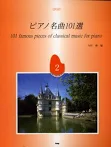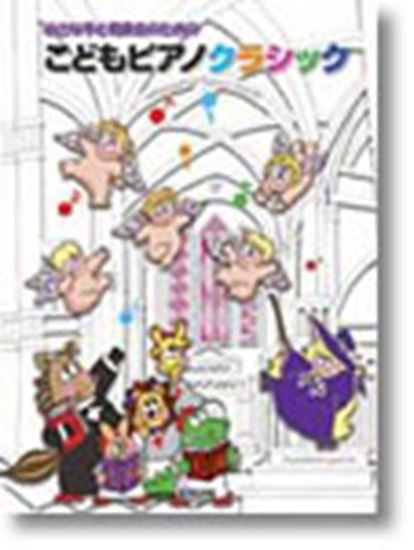Tchaikovsky, Pytr Il'ich : Les saisons - 12 Morceaux caracteristiques No.6 "Barcarolle" g-moll
Work Overview
Genre:barcarolle
Total Playing Time:4 min 00 sec
Copyright:Public Domain
Commentary (2)
Author : Yamamoto, Akihisa
Last Updated: June 25, 2019
[Open]
Author : Yamamoto, Akihisa
If we stand on the shore, the waves that approach
Will kiss our feet.
The stars, with mysterious melancholy,
Will shine above us.
The epigraph is from Pleshcheyev's (also known as Plescheyev) "Song" (1845). Reading the subsequent development of the poem, the first-person plural "we" likely refers to young lovers.
With a gentle, wave-like accompaniment based on the tonic chord of G minor as an introduction, a melody based on scalar stepwise motion, a technique Tchaikovsky excels at, is played (other examples can be found in, for instance, the final movement of Symphony No. 4, the Pas de Deux from The Nutcracker, and the second and third movements of the Serenade for Strings). While barcarolles are generally composed in compound meters such as 6/8 or 9/8, it is interesting that Tchaikovsky chose 4/4 time.
In the short middle section, the music shifts to the parallel major and gradually increases in tempo, reaching a climax in 3/4 time under the indication "giocoso" (with cheerfulness). But this cheerfulness does not last long, being interrupted by brilliant arpeggios in the high register, leading back to the recapitulation of the main section. The publisher, Bernard, may have chosen the epigraph, perceiving the twinkling of stars from the sound of these arpeggios.
Author : Ooi, Kazurou
Last Updated: March 12, 2018
[Open]
Author : Ooi, Kazurou
June: "Barcarolle"
The technical difficulty of this piece, I believe, lies in its B section. Therefore, it is generally not an easy piece for, say, elementary school children to play. However, it is also undoubtedly a piece from which much can be learned. Many may recall seeing in school music textbooks that 4/4 time is described as having a strong beat, weak beat, moderately strong beat, and weak beat. In reality, however, in many classical pieces, the first beat is often consistently soft in volume, and this piece is a typical example.
In this piece, the final note of a melodic line, or the final note of a subtle phrase within it, almost always concludes on the first beat. And on that first beat, the tension must be released so that the sound fades away. It should not be the same volume as the preceding note, nor should it be accented. The basic shaping is as follows:
The right-hand melodic line begins on the upbeat of beat 3 in measure 2, starting from D, reaching its peak in measures 3-4, becoming slightly softer in measure 4, and even softer in measure 5. In the case of this piece, it is safe to assume that the pitch height of the melodic line corresponds to the intensity of emotion.
Do not overlook changes in harmonic progression; feel them sensitively. For example, the FACEs on beat 4 of measure 7 and the DF#A on beat 1 of measure 18, while harmonically corresponding to beat 4 of measure 3 and beat 1 of measure 14 respectively, have completely different moods. Vary them by changing their color or volume. To explain the psychological state with the current example: in measures 13-14, the emotion is calm with a faint glimmer of hope, whereas in measures 17-18, it is realistic and expresses sadness. This is merely an example; the emotions should be varied according to the performer's interpretation.
Many performers encounter difficulties in the B section. General points of caution for the B section are as follows:
- Similar to the A section, the first beat of many measures in the B section is a point of harmonic resolution. Be careful never to accent it.
- In measures 36-39, bring out the left-hand seconds. In this case, the subsequent notes should be played softer.
- In measures 40-49, play improvisationally. Articulation is also important, so observe the staccato markings.
- From beat 2 of measure 47, completely change the mood. It is an expression of sadness. This gradually becomes more emotional, leading to the cadenza in measures 50-51.
- Because the cadenza in measures 50-51 is technically challenging, many performers drastically drop the tempo here. However, the marking is poco riten. Measures 49 and 50 should proceed at almost the same tempo. Pay close attention here and count carefully. The arpeggio marking for this cadenza is continuous from bottom to top. This means that instead of arpeggiating both hands simultaneously, it should begin with the left hand and then transfer to the right.
- However, as you will realize when you actually play it, there is a string. marking in measure 48, indicating that the tempo must gradually accelerate. From a personal perspective, adhering to the left-to-right arpeggio transition in measures 50-51 under such a tempo condition becomes temporally unfeasible. Therefore, while starting with the left hand is correct, the right-hand arpeggio should begin before the left hand finishes, creating an overlap. Unless this is done, the cadenza in measures 50-51 becomes extremely difficult. In other words, I strongly recommend maintaining the tempo, even if it means overlapping. The tempo is that crucial; ensure it does not arbitrarily double from one measure to the next.
Arrangements & Related Works(3)
PTNA & Partner Channel Videos(5items)
Sheet MusicView More
Scores List (27)

(株)全音楽譜出版社

(株)ドレミ楽譜出版社

(株)音楽之友社

(株)全音楽譜出版社

(株)全音楽譜出版社

(株)音楽之友社

KMP(ケイ・エム・ピー) ケイエムピー

KMP(ケイ・エム・ピー) ケイエムピー

(株)タイムリーミュージック

(株)ドレミ楽譜出版社

(株)ドレミ楽譜出版社

ハンナ(ショパン)

KMP(ケイ・エム・ピー) ケイエムピー

(株)ドレミ楽譜出版社

(株)ヤマハミュージックエンタテインメントホールディングス

(株)音楽之友社

(株)全音楽譜出版社

ヘンレ社(ヤマハ)

(株)ヤマハミュージックエンタテインメントホールディングス

(株)ヤマハミュージックエンタテインメントホールディングス

(株)学研プラス

(株)学研プラス











